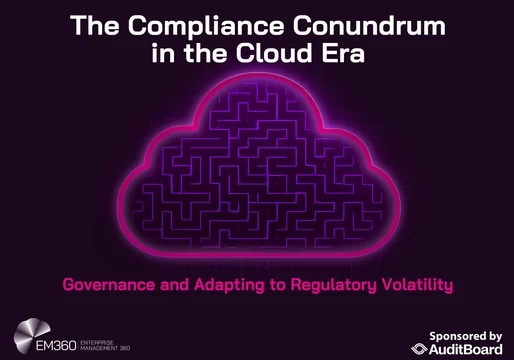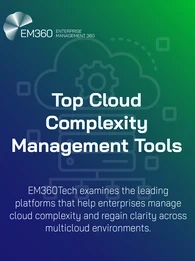
Enterprise web performance defines how digital infrastructure absorbs growth, handles complexity, and maintains responsiveness across global demand. At scale, WordPress must operate as an integrated system, capable of managing high-traffic environments, advanced content logic, and third-party connections without degrading load time or functional stability.
Scaling beyond SMB scenarios introduces architectural pressure across database performance, plugin orchestration, and distributed content delivery. This article explores how enterprise-grade WordPress deployments meet these demands through architectural refinement, infrastructure strategy, caching design, integration control, and governance structures.
The Enterprise Scaling Challenge
Enterprise-grade web ecosystems demand performance across dimensions that far exceed typical SMB usage. WordPress must sustain heavy traffic volumes, often serving millions of monthly page views without performance degradation.
Large organizations often operate multi-site networks with multilingual content, version control, and publishing workflows that span teams and time zones. These environments require a structured approach to permissions, asset management, and editorial governance.
Integration complexity increases with enterprise infrastructure. WordPress must communicate with ERPs for transactional data, CRMs for user segmentation, HRIS platforms for access provisioning, and DAM systems for media governance and management.
Analytics platforms drive further load through tracking scripts and API calls. Performance bottlenecks often stem from these external dependencies as much as from core application logic.
At scale, latency compounds. CDN configuration, object caching, and schema design become operational rather than optional. Every interaction, whether loading a dashboard, triggering an API, or publishing a content update, must complete within tightly defined performance budgets.
In enterprise contexts, WordPress is not simply scaled; it is restructured to function as an integrated performance surface within broader digital operations.
Core Architecture of WordPress at Scale
Scalable WordPress architecture starts with database efficiency. Query performance depends on indexed schemas, relationship clarity, and elimination of redundant calls. High-load environments require deliberate database structuring to reduce overhead and support rapid content retrieval across thousands of posts, users, and custom fields.
Application logic is modular by necessity. Clean plugin ecosystems replace plugin stacking, while functionality is isolated into services or feature modules. Enterprise deployments often include CI/CD pipelines for continuous validation of code performance, regression detection, and structured deployment across staging and production.
Gutenberg becomes a design system rather than a content editor. Its block-based architecture supports consistent layout behavior, reusable UI components, and structured content logic.
Themes built for scale reduce style recalculations and minimize render-blocking behavior, especially when combined with server-side rendering and hydration strategies. At scale, every layer of WordPress must be declarative, optimized, and testable.
Infrastructure and Hosting Foundations
Enterprise-grade WordPress depends on infrastructure that scales predictably under load. Managed hosting platforms offer performance baselines with SLA-bound support, but custom server environments provide finer control over stack configuration, routing logic, and deployment orchestration.
Containerization frameworks such as Docker and Kubernetes decouple application instances from hardware constraints. They support elastic scaling, parallel processing, and fault isolation across distributed environments. Orchestration tools manage container lifecycles, automate rollbacks, and maintain service uptime during deployments.
Global content delivery relies on the integration of CDN. Cached assets, geo-routed requests, and edge computing reduce latency across regions. Performance improves further through HTTP/2 and HTTP/3 protocols, which multiplex requests and reduce connection overhead.
DNS optimization, through routing policies, low TTL values, and anycast networks, contributes directly to initial load times. In enterprise hosting, infrastructure is performance-critical by configuration, not assumption.
When it comes to high-traffic environments and complex integrations, generic hosting setups often fall short. Purpose-built enterprise web solutions like those developed by IT Monks ensure that WordPress can deliver the performance, security, and scalability enterprises demand.
Caching and Speed Optimization Layers
Caching reduces server load by serving precomputed responses. Page caching stores full HTML outputs for fast delivery, while object caching retains database query results in memory using systems like Redis or Memcached. Both are foundational to WordPress performance at scale.
Edge caching through CDNs moves asset delivery closer to users. Static files, API responses, and even full pages can be cached at edge locations, bypassing origin servers entirely. This reduces time to first byte and stabilizes performance during traffic surges.
Media-heavy environments rely on lazy loading to defer non-critical asset rendering. Images, videos, and iframes load only when visible in the viewport, reducing initial page weight. Scripts and stylesheets are bundled and minified to minimize HTTP requests and lower file size. Each optimization reduces latency across the full delivery path, from server to browser, without altering editorial workflows.
Security and Governance Under Load
Enterprise WordPress enforces access control through role-based permissions across users, sites, and APIs. Each action is logged through audit trails to support policy compliance and traceability.
DDoS protection, rate limiting, and bot filtering are applied at network and application layers. Security must perform under traffic spikes without degrading experience or exposing endpoints.
Compliance is built into the code structure. GDPR logic governs data handling and consent flows, while WCAG rules define accessible markup and navigation behavior. Governance scales through enforced logic, not manual oversight.
Case Studies in Enterprise WordPress Performance
A media platform handling breaking news uses edge caching and load-balanced infrastructure to absorb sudden traffic spikes without downtime. CI/CD pipelines maintain performance during rapid content updates.
A global brand runs a multilingual, multi-site network with centralized asset control and regional publishing roles. CDN integration and object caching reduce latency across continents.
These cases show that scalability relies on architecture, deployment discipline, and integration logic working as one system. Performance is sustained through structure, not reaction.
Future-Proofing WordPress Performance
Observability tools, such as New Relic, Datadog, and the Elastic Stack, provide real-time visibility into application health, slow queries, and infrastructure strain. Monitoring becomes part of the performance loop, not a post-failure check.
AI-driven autoscaling adjusts resources based on usage patterns, preventing overload without manual intervention. Predictive logic replaces reactive scaling in mature deployments.
WordPress core continues adapting for large-scale use through improvements in REST API handling, block rendering efficiency, and core database functions. Long-term performance depends on aligning platform evolution with enterprise-grade standards.














Comments ( 0 )